Home » Hunting Dogs » Most Popular Bird Dog Breeds of 2023
Most Popular Bird Dog Breeds of 2023
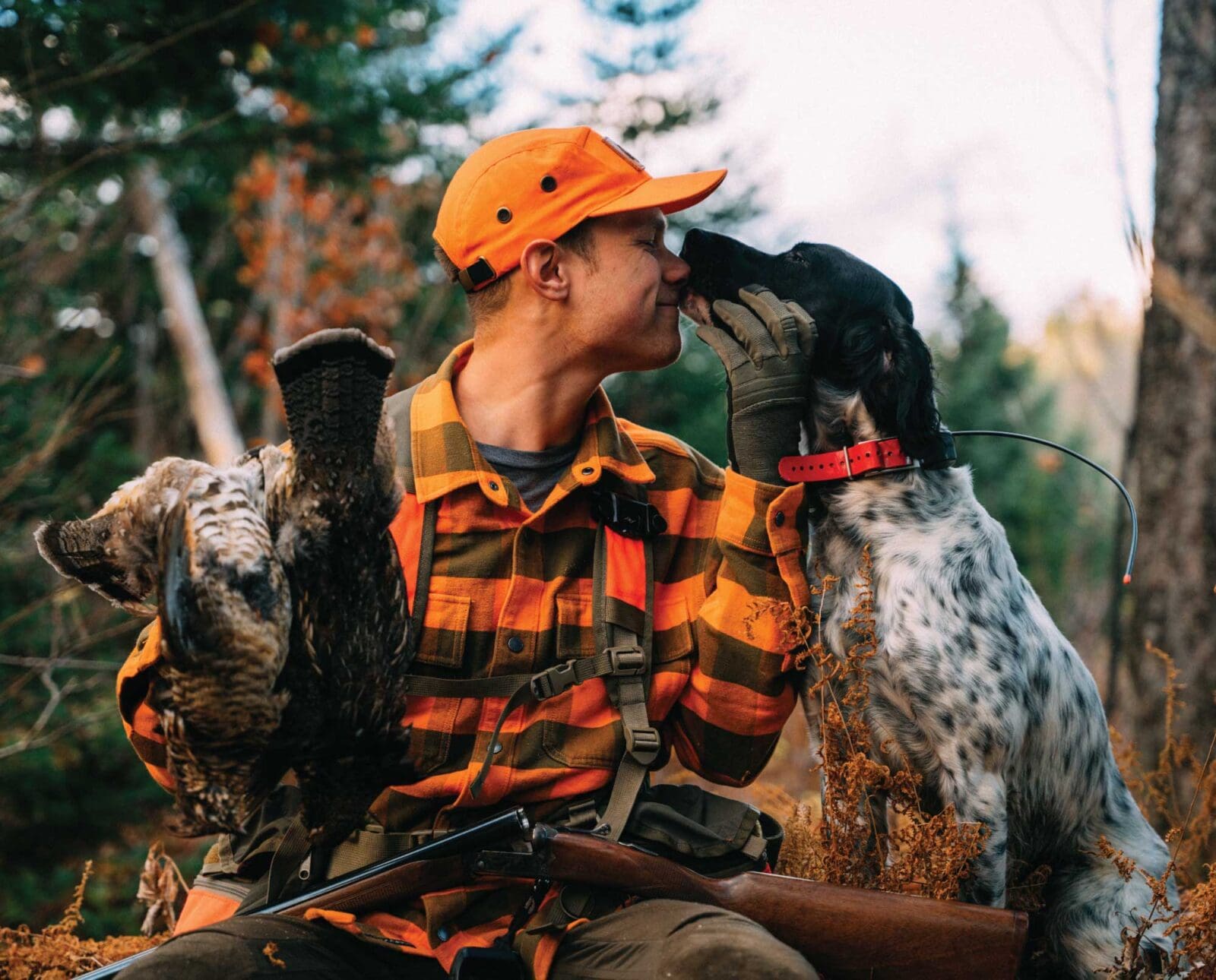
A.J. DeRosa founded Project Upland in 2014 as an excuse…
Exploring the most popular bird dog breeds of the upland hunting community over the years
The annual North American Upland Bird Hunting Survey ended earlier this year, and what better way to start sharing the data than by starting a brawl over the most popular bird dog breeds? Undoubtedly, some bias comes out in our world, which tends to be pointing dog-centric.
When asked, “What type of hunting dogs do you own?” the upland community said:
- Pointing at 54.04%
- Versatile at 32.12%
- Retriever at 22.42%
- Spaniel at 11.2%
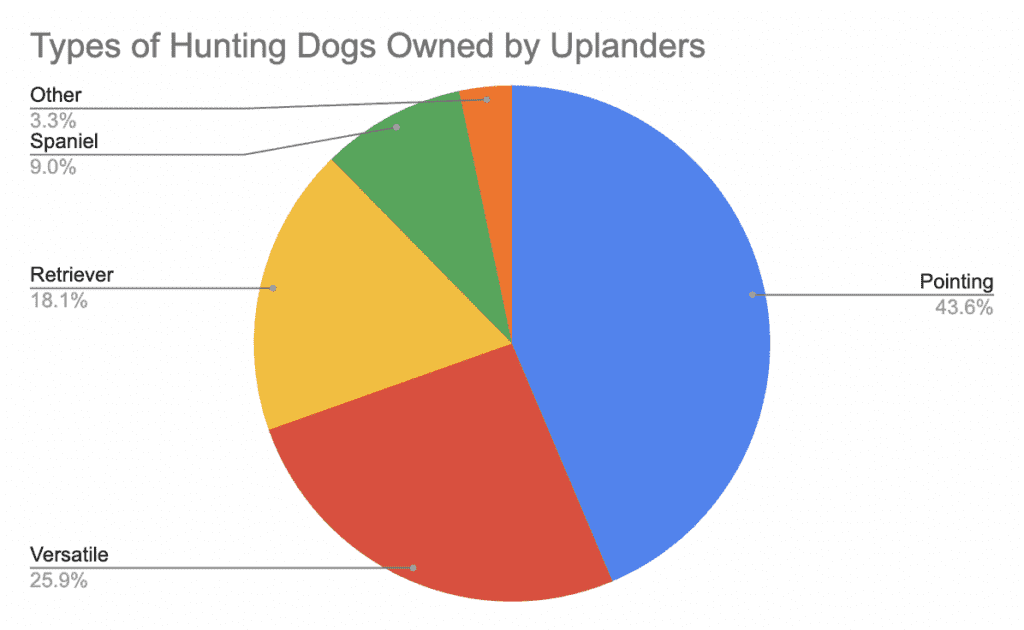
At Project Upland, we do our best to feature various dog breeds in our content. In recent months, we’ve been making sure our spaniel-loving friends get some love. All dog breeds are great and specialized (or versatile) in their own ways; we try to filter our personal dog breed snobbery in our content.
In addition to asking about what type of hunting dog uplanders own, the survey also asked what breed of dog they own. Here’s a breakdown of the top five hunting dog breeds owned by the upland community.
Top 5 Bird Dog Breeds of 2023
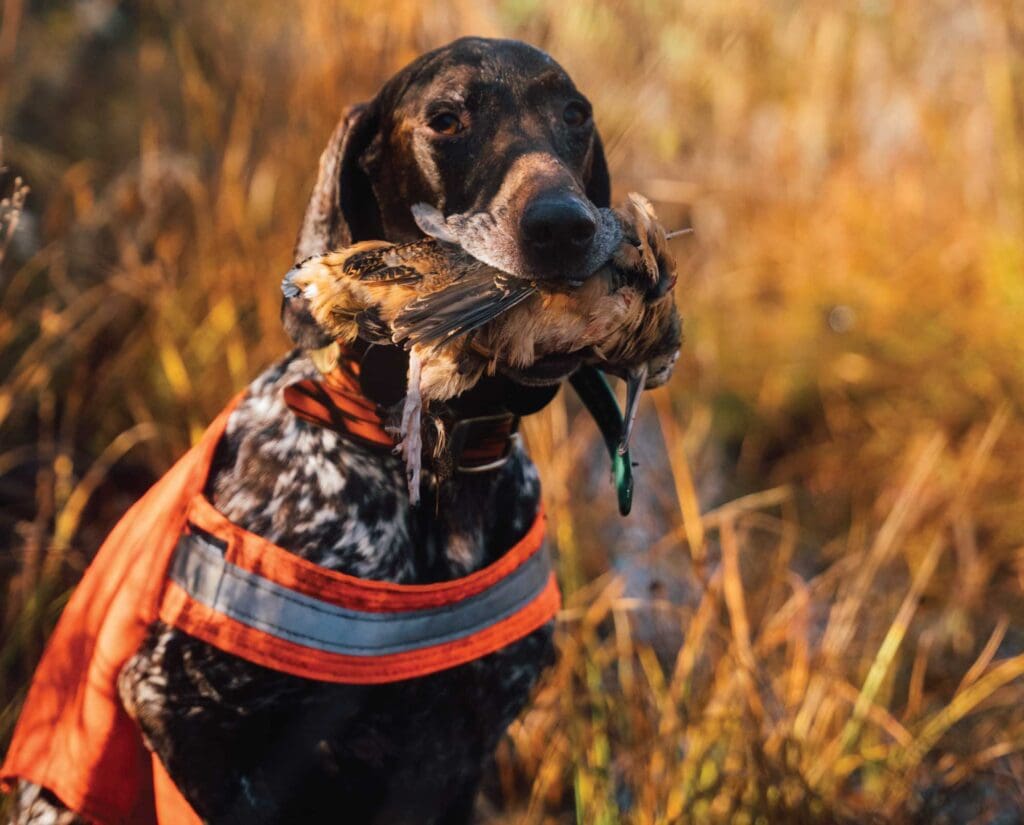
1. German Shorthaired Pointer
I obsessed over the idea of owning a German Shorthaired Pointer when I was a kid. It’s no surprise that the GSP is the only pointing dog to appear in America’s top 10 most popular dog breeds. However, it dropped in rank from the #9 slot in 2021 to #10 in 2022, according to the American Kennel Club (AKC).
Our annual survey showed that 20.88% of the Project Upland Community hunts with a GSP. That percentage is double that of any other popular pointing dog breed. The North American Versatile Hunting Dog Association registered 1,487 GSPs in 2022, making it NAVHDA’s most popular dog. However, they’ve seen a slight downward trend in GSPs from the breed’s 2021 peak.
The GSP is most popular among Generation Z (those born after 1996); 38.33% of Gen Z-ers hunt with a GSP. However, this percentage declines through each earlier human generation. Baby Boomers (born before 1965) come in at 16.09%. Millennials (born between 1981 and 1996) and Generation X (born between 1965 and 1980) fell in the middle within a few percentages. The GSP’s popularity will only continue to rise, given that the youngest generation of hunters adores the breed.
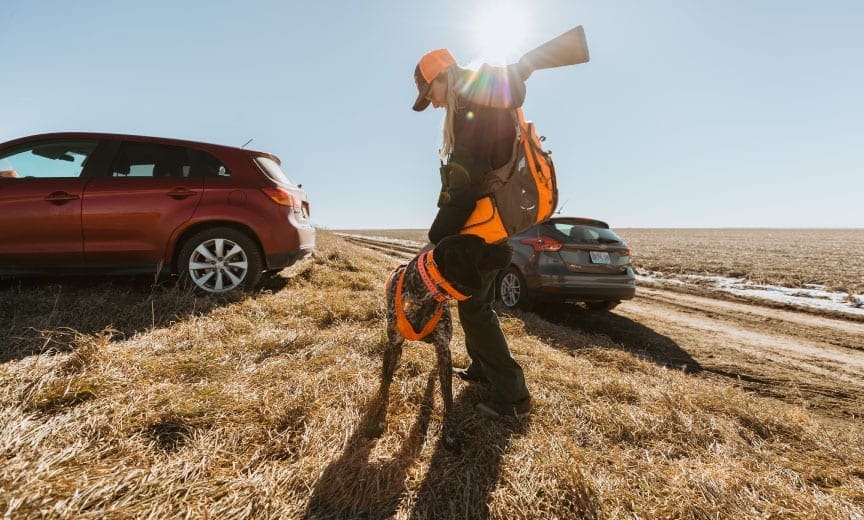
The German Shorthaired Pointer is a newer breed in the United States compared to others. Recognized by the AKC in 1930, many say the breed first developed in the 1800s, though the concept of German bird dogs dates back to the 1700s. These were the days when the idea of a versatile hunting dog became popular instead of keeping many specialty breeds. The German performance testing for these dogs is still very much in line with that theory, including portions of the test for rabbits and ducks in addition to upland game birds.
Buyers beware, though, as the high population of GSPs in North America (over 10,000 puppies a year are born here) combined with popular non-hunting breeding programs means that folks searching for German Shorthaired Pointers must exercise due diligence when researching breeders. Although thorough research should be done when considering any breeder, this huge population of non-hunting GSPs creates potential issues in finding a quality bird dog.
To avoid selecting a less-than-ideal hunting dog, consider looking at GSP breeders who subject their dogs to the German testing system or the Jagdgebrauchshundverband (JGHV). This is a fail-safe option when searching for good hunting genetics. Just be careful not to call these German-tested dogs German Shorthaired Pointers, but rather, Deutsch Kurzaars.
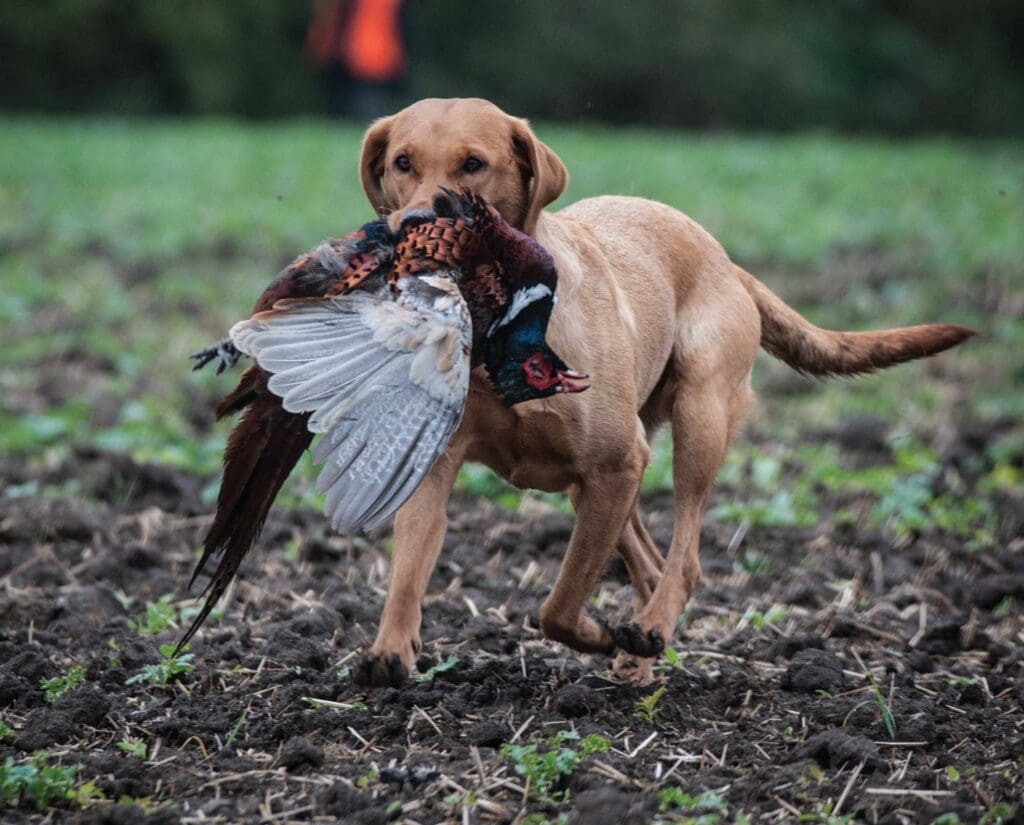
#2 Labrador Retriever
In general, retrievers are much more popular than pointing dogs. The Labrador Retriever enjoyed being America’s favorite breed for many years; only recently was it passed by the French Bulldog, according to the AKC. The Golden Retriever was #3 nationally and #12 in the Project Upland community. The 2023 North American Upland Hunting Survey showed that the Labrador Retriever, at 18.67%, is the second most popular bird dog breed. That is no surprise, as pheasant still holds a special place in American hunters’ hearts.
Generationally, the Labrador Retriever is the most popular dog breed for Baby Boomers. It is least popular among Millennials at 16.27% but has had a resurgence among Generation Z, where they spike at 21.67%.
The mainstream popularity of this breed creates issues with breeding as there tends to be a lot of controversy surrounding the purity and standards inside the hunting community. Just utter “Silver Lab” inside a room full of Labrador enthusiasts, and you may not leave the room alive.
Developed from the St. John’s Water Dog, the Labrador’s key characteristics revolve around pulling fishing nets and ropes and retrieving fish. Their popularity stretches throughout the upland hunting dog world and across the world of waterfowl hunting because they are incredible natural retrievers.
Even if they are outranked by the German Shorthaired Pointers in the uplands, the Labrador is still an incredible breed for a wide range of hunting, including their dominance in waterfowl hunting. Even ruffed grouse culture has its place for the Labrador Retriever; just watch “Flushing Grouse.”
In more recent years, there has been a surge in “British Labs” in America. A driving factor in this trend is a distinguishable difference in temperament versus classic, American-bred Labrador Retrievers developed for field trials. This iconic breed even found its way into the heart of Eddie Bauer, who would write of the British Labrador Retriever, “The greatest of all the great dogs I have ever known; one I have loved above all others. I hope, when I go to the Happy Hunting Grounds, Blackie will come to my side, as I will try to go to his.”
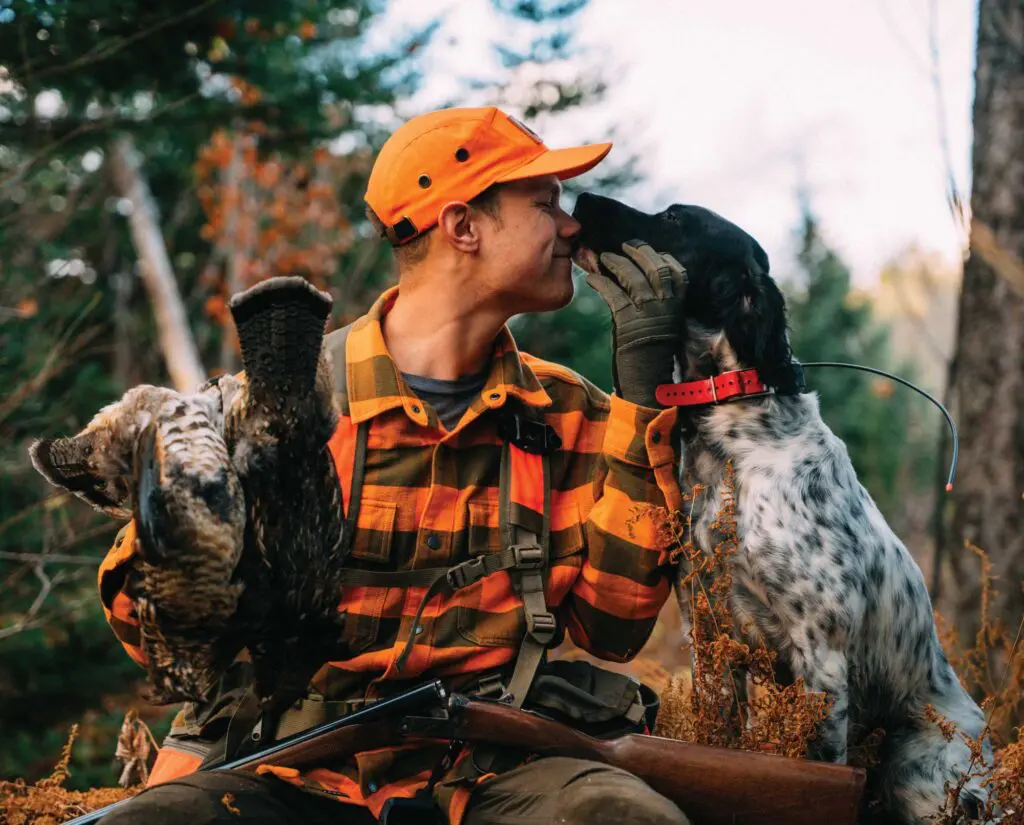
3. English Setter
The north country is fascinated with Ripley paintings, iconic upland writers, and many cultural norms regarding ruffed grouse hunting. The English Setter is a normalized cornerstone. Despite a large amount of admitted bias towards the English Setter in Project Upland content due to its founding location, it lost its #2 slot for 2023, dropping to the third most popular bird dog breed of 2023 at 13.99%.
Generationally, the English Setter is most popular among Baby Boomers and declining in popularity among Generation Z. It is still the most popular dog breed among Ruffed Grouse hunters.
The English Setter just barely made the cut for the top 100 most popular dog breeds in the United States, according to the AKC, coming in at 93. The Irish Setter, amazingly, beat them at #71. It’s worth mentioning that the AKC pointed out a significant jump in the Gordon Setter’s popularity in 2022, putting it at #99 nationally. In our community, Gordons came in at #14. The history of the Setter is fascinating and hatched out in arguably the most remarkable detail ever put into print with Craig Koshyk’s new book Pointing Dogs, Volume Two: The British and Irish Breeds.
I often refer to these other setter breeds as “Gen One” grouse dogs. Notably, they were among the most popular dog breeds used for grouse hunting at the turn of the century. Later, they were taken by storm with the Pointer and English Setter as the future of grouse hunting dogs, according to William Harnden Foster, author of New England Grouse Shooting. You can see the Gordon Setter in action with Hunting Guide and Breeder Stephen Faust in the film Through the Trees.
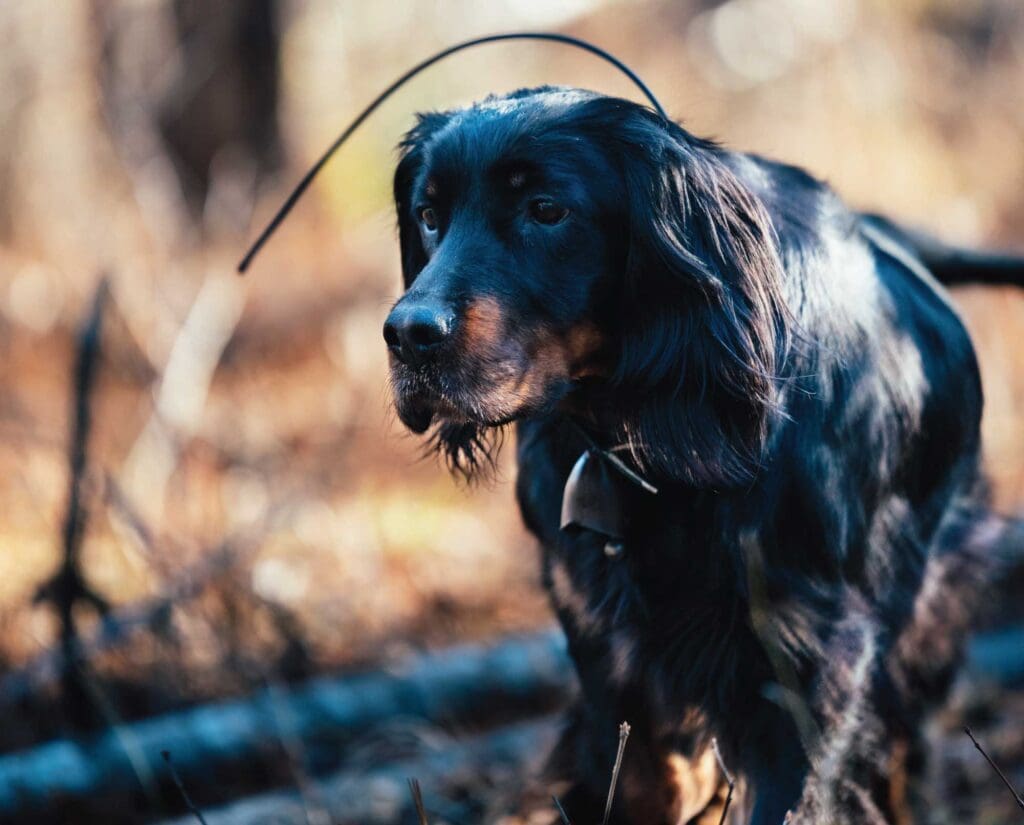
Beyond our community’s trends, the English Setter has a long history in the story of bird dog development. Artwork dating back to the 15th century depicts long-haired dogs that many people believe to be the earliest days of the breed. The modern version of the breed is traced to the early 1800s when Edward Laverack of England developed what most believe is the modern show breed. In his 1872 book, The Setter, Laverack describes the various types and lines of setters in England by the second half of the nineteenth century.
More notable in the bird dog community is the name Richard Purcell Llewellin, also from England, who would use part of the bloodline developed by Laverack to produce the sporting version of the breed. In fact, Edward Laverack dedicated his book to Llewellin and wrote, “Who has endeavored, and is still endeavoring, by sparing neither expense nor trouble, to bring to perfection the ‘Setter.’” The “Llewellin setter” has carried a legacy that is still alive today, though whether or not it should be considered an English Setter is a topic up for lively debate.
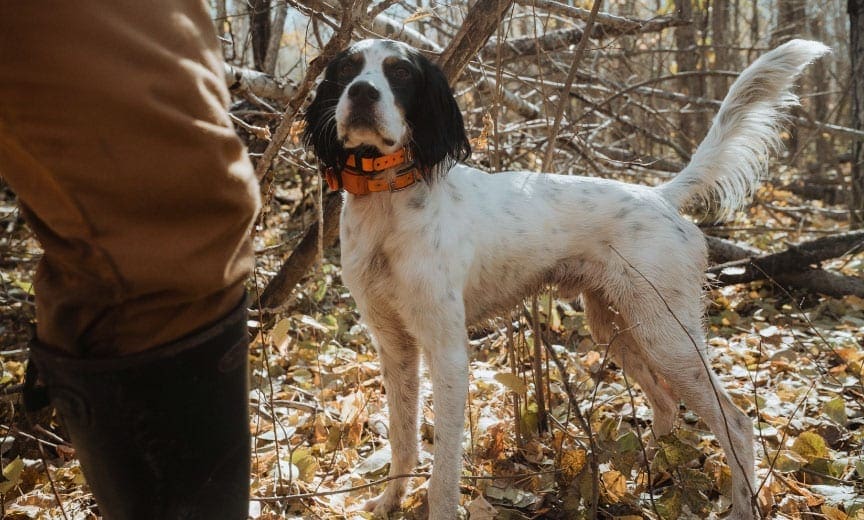
In Craig Koshyk’s article titled “How English is the English Setter?,” he points out how the breed went on to meteoric popularity in Italy with upwards of “ten- to twenty-thousand pups, Italian breeders sometimes register more English Setters than the rest of the world combined.” While not as popular in the United States, estimates show that about 4,000 English Setters are born yearly.
Another famous bloodline in the English Setter lineage would pop up in the United States in connection with George Ryman, creator of the “Ryman Setter.” To avoid being stoned to death by enthusiasts, I will not attempt to spell out the key characteristics that make up the Ryman Setter but merely point you in the right direction for credible information on the subject: The Real Ryman Setter: A History With Stories from the Appalachian Grouse Covers by Walt Lesser. This version of the breed was specifically developed for ruffed grouse hunting.

4. Brittany
While I grew up with Brittanys, I decided they were not my dog of choice in my adult years. Despite my personal decisions, the breed is popular in the world of bird dogs, landing them at the fourth most popular spot at 11.39% and 28th most popular breed in the United States, according to the AKC.
In NAVHDA, the Brittany was the 8th most popular breed registered in 2022. The Brittany’s greatest popularity is with Baby Boomers at 13.38%, dropping to the #5 most popular bird dog breed for Millennials and Generation X.
The history of the Brittany in the United States began in the 1930s when a well-known Wirehaired Pointing Griffon breeder began importing them. Two clubs merged in 1942 to create the American Brittany Club. In the 1960s, it was France’s most popular hunting dog breed. By the 1980s, growing pressure existed to split the Brittany into the American Brittany and French Brittany (or Epagneul Breton). It became a reality in 2002 when the United Kennel Club officially recognized the split. Despite the older name of Brittany Spaniel, the Brittany is, in fact, a pointing dog breed.
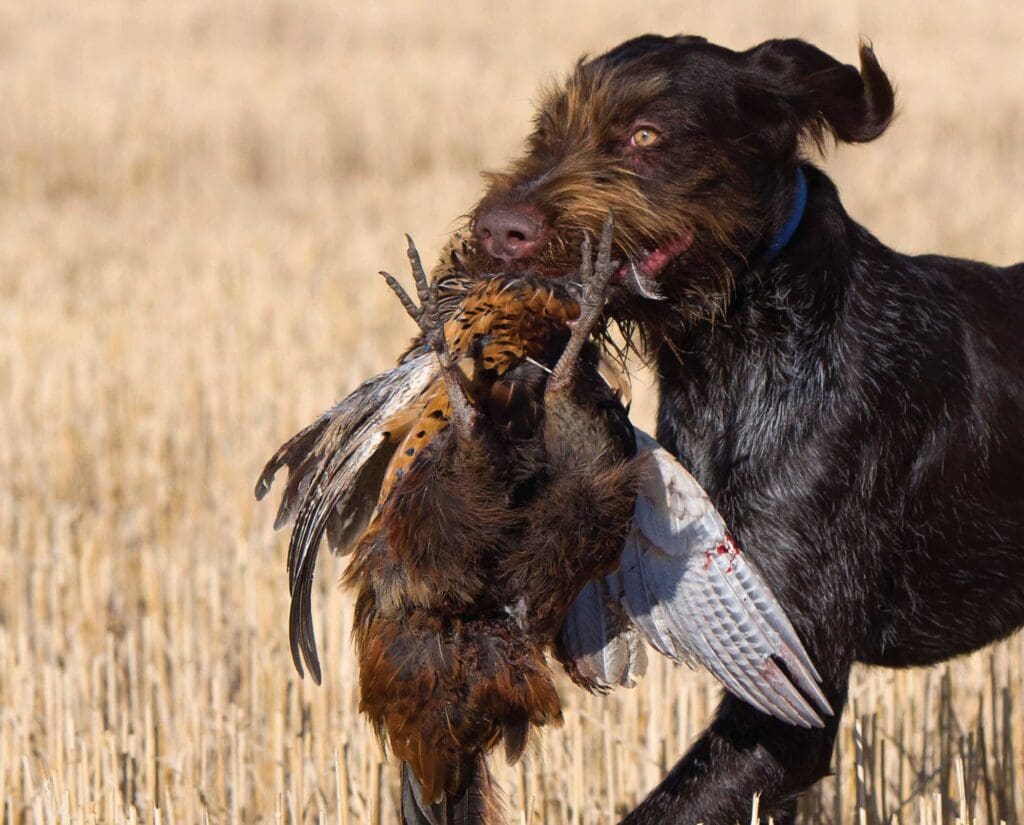
5. German Wirehaired Pointer
The German dog popularity did not end with the GSP. German Wirehaired Pointers come in as the fifth most popular bird dog. According to the American Kennel Club, they are the 59th most popular dog breed in the United States. It came in at 10.69% in popularity amongst the Project Upland Community. If you want to start an internet war, mention the difference between the German Wirehaired Pointer and the Deutsch Drahthaar.
One thing is for sure: the German Wirehaired Pointer is gaining popularity with younger generations. The GWP was the third most popular bird dog breed for Gen Z and the fourth most popular for Millennials and Gen X. It had the least popularity with Baby Boomers. It was the fourth most registered breed with NAVHDA in 2022.
The German Wirehaired Pointer is a latecomer to the United States. The official club was not formed until 1959. The first German club in the United States started in 1971, and by 1984, a Canadian chapter was also recognized by the VDD.
2023’s Other Popular Bird Dog Breeds
Was your favorite bird dog breed not mentioned yet? It may have made it into the top 16 bird hunting breeds for 2023! Here is a breakdown of how the 16 most popular bird dog breeds to hunt with played out in the 2023 North American Upland Hunting Survey:
- #6 Wirehaired Pointing Griffon (7.36%)
- #7 Pudelpointer (5.15%)
- #8 Pointer (4.84%)
- #9 Springer Spaniel (4.49%)
- #10 Small Munsterlander (3.29%)
- #11 English Cocker (3.14%)
- #12 Golden Retriever (2.87%)
- #13 Vizsla (2.17%)
- #14 Gordon Setter (1.94%)
- #15 Boykin Spaniel (1.59%)
- #16 Weimaraner (1.36%)
After the Weimaraner, all other bird dog breeds polled under 1% from there on out. We will undoubtedly see rising stars as popularity grows for breeds like the English Cocker and Gordon Setter. This wide variety of dog breeds represents different styles and flavors of bird hunting; having the freedom to choose our breed of choice allows us to truly do things however we want. Find and research a proper breeder, and you will be on your way to a great, dog-centric upland adventure.
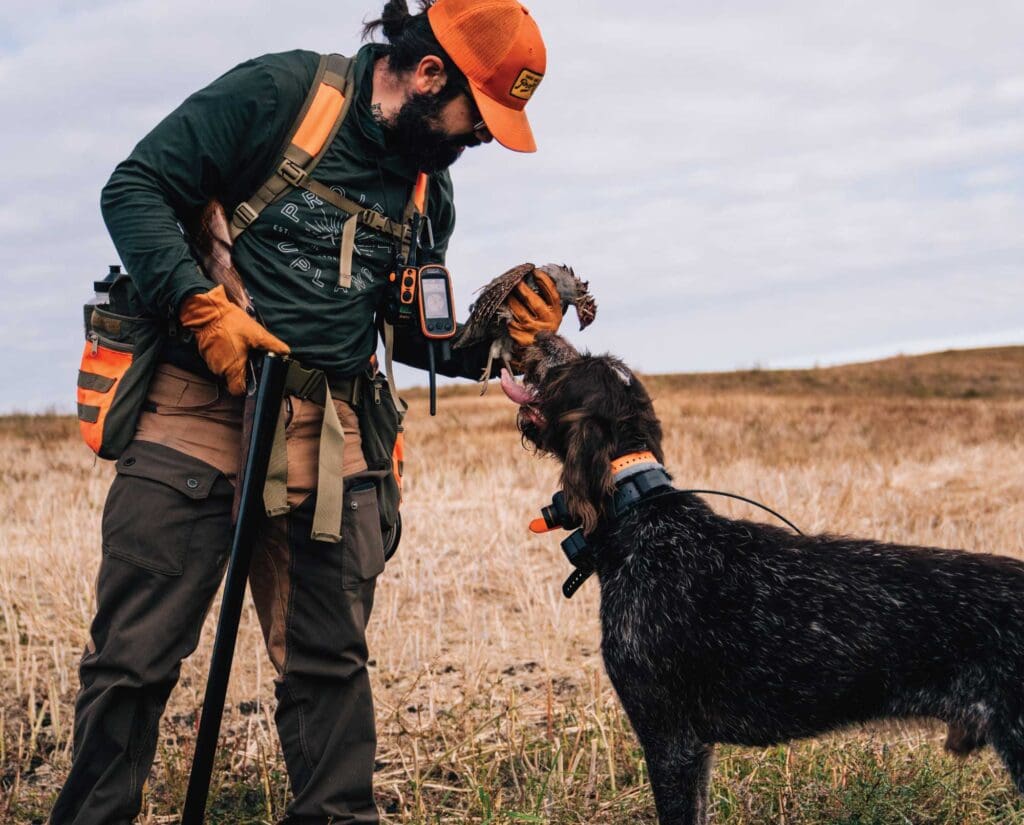
A.J. DeRosa founded Project Upland in 2014 as an excuse to go hunting more often (and it worked). A New England native, he grew up hunting and has spent over 35 years in pursuit of big and small game species across three continents. He has a passion for side-by-side shotguns, inspiring him to travel the world to meet the people and places from which they come. Looking to turn his passion into inspiration for others, AJ was first published in 2004 and went on to write his first book The Urban Deer Complex in 2014. He soon discovered a love for filmmaking, particularly the challenge of capturing ruffed grouse with a camera, which led to the award-winning Project Upland film series. AJ's love for all things wild has caused him to advocate on the federal and state levels to promote and expand conservation policy, habitat funding, and upland game bird awareness. He currently serves as the Strafford County New Hampshire Fish & Game Commissioner in order to give back to his community and to further the mission of the agency. When those hunting excuses are in play, you can find him wandering behind his Wirehaired Pointing Griffon in the mountains of New England and anywhere else the birds take them.

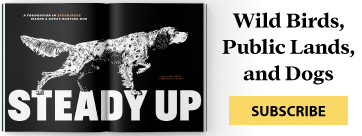



Interesting article. Please note: Drahthaar is misspelled! ” The English springer spaniel placed fifth place at 4.38 percent. The last five slots are held in the order of the wirehaired pointing griffon, drahtaar, vizsla, English pointer and the golden retriever. “
What?! English Pointers rule.
Drahthaar is the correct spelling.
The author did not know there’s no “y” in Llewellin. Grouse hunters who own setters always refer to their dogs by their strain, i.e. Ryman, DeCoverly and Llewellin, hardly ever as English setters. They leave that for Field setter owners.
Hey Max, great catch on that detail. We have amended that breed reference as you are correct as that is how they referred to as today as “Llewellin”. Upon our research we did, we found that Purcell Llewellyn name was in fact spelled with a “y” and not an “i” which is a welsh origins name (he was from Wales). Common occurrence to the name in the states. Thank you for the feedback!
I will correct you again. His name was Richard Purcell Llewellin and as written and well documented in Freeman Lloyd’s book All Setters: Their Histories, Rearing & Training (ca. early 1930’s), A.F. Hochwalt’s books Dogcraft (1908) and The Modern Setter (1923) show no Llewellin spelling with a “y” when referring to Richard Purcell Llewellin. Welsh or not it’s Llewellin.
Hey Max,
This is pretty interesting stuff and certainly do not doubt the validate of what you are saying at all. You actually bring up a great point. You have inspired me to dig deeper on this and I dug up a magazine article from 1898 in a magazine called “Outing”. The article is called “Dogs of To-day – The English Setter”, using the name “Llewellyn”. I think an article on this whole topic maybe in order in the near future. I found a couple other for the early 1900’s however I am noticing they are all of British origins. One called “The New Country Life” in 1917. I also saw a modern republish (2010) on a book called “The Irish Setter” that also uses the “y”. However again, British origins.
But as you said today it is 100% refereed to as “Llewellin”. Would love to continue the conversation and even pick your brain a bit if you are willing to see what else can be found and some more details on the references you gave to cite in the article. Thanks again, truly appreciate your passion and knowledge, I am by no means a setter expert. My email is aj.derosa@northwoodscollective.com
This was interesting. And of course the answer is correct as both my Llewelyn and I agree with the result😎I subscribe to Project Upland and have found the first couple of issues somewhat interesting. But I also have noticed what you commented on which is that a preponderance of your authors writing about grouse and western plains hunting. To hold me and guys like me in your audience you need to get some voices from the southeast. It’d be a natural, upland hunting for quail is in our blood here.
Great feedback Alan! We are working to add more southern content. In fact you will see a good uptick in it for the winter issue. Fall issue has an article specifically based around conservation for bobwhite and restoring native grasslands to Missouri.
Cool article. We breed GSP’s and Brittany’s. I am liking this format. Just starting to explore PU now. Thanks
The last spot can’t be held by Golden Retriever. I hunt a couple of Braque Francais, and they have to be less numerous in the upland community then the Golden Retriever.
Our wording was bit off in that. Just added (of the top ten). So Golden Retriever was #10 in the audience at 2.09%. The 1.11% of the audience cited owning Braque Francais.
Brittanys and GWPs are clearly not the authors favorite breeds. Three short paragraphs and one photo each haha.
While I am not surprised the GSP is on the top it would be safe to speculate that the GSP as a name no longer describes one breed but rather a type of dogs that may share superficial similarities and some ancestry. There is enormous difference between the GSP that goes beyond mare line or subset within the breed. I don’t see anything in common between a 40lb quail dog and a 65Lb NAVHDA bred GSP. Not to mention the DK, which is almost its own breed, has got its own lines and types which vary by kennel or regions. I guess only common physical feature between these dogs is the docked tail.
This so called GSP dogs vary from the manner of hunting, style and temperament.
It is also safe to assume that the good percentage of the GSP in America has some doze of Pointer blood. However, this is not unique to the American GSP, but quite often happened in many other countries such as Italy, France and the Balkans.
But one thing is clear, the GSP is the most successful upland breed in the world. You will not find a country with an upland culture that does not have GSPs. And maybe their success lay in that they are very diverse, adaptable and flexible in a sense.
Based on this survey, I wonder what the ration between GSP and DK is? (Yes, I have a bias for DK though I don’t own one)
I would gather the Deutsch Kurzhaar ratio is pretty high as well. But the survey, while did allow write ins (which some people did write in the DK), did not separate the GSP/DK. GSP was the only option on that front.
What is the exact difference between the English Pointer or a GSP? My Ben dog is registered GSP but I bought him as much for his resemblance to the English Pointer which We hunted as a youth (white w/ liver spots) as much as Ben’s close hunting instinct & retrieving/soft mouth instincts. Size/body weight?